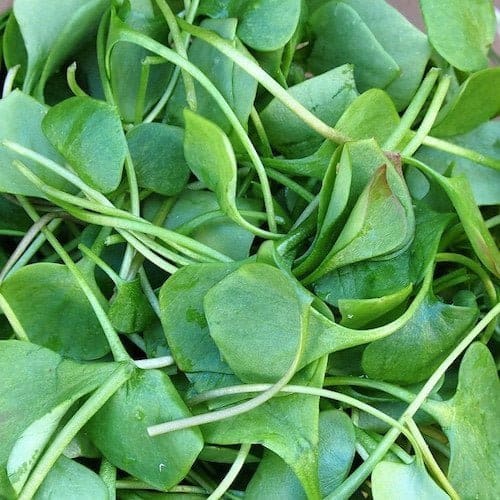
Watercress
Watercress is a leafy green herb that grows in running water. It has small, round leaves and a slightly peppery taste, similar to rocket (arugula). Although it looks delicate, watercress is packed with nutrients and has been eaten for thousands of years. In fact, it was a favourite among the ancient Greeks and Romans.
This herb belongs to the same family as cabbage and mustard, called the Brassicaceae family. It grows best in cool, clean streams or waterbeds and is often found in bunches at markets or supermarkets. It’s bright green in colour and can be eaten raw or lightly cooked.
One of the best things about watercress is how good it is for you. It’s rich in vitamins A, C, and K, as well as calcium and iron. These nutrients help support strong bones, healthy skin, and the immune system. Watercress is also full of antioxidants, which help protect the body from damage caused by free radicals.
People often use watercress in salads, sandwiches, or as a garnish. It adds a fresh, peppery flavour to dishes without overpowering other ingredients. It also works well in soups. In fact, watercress soup is a classic recipe in many parts of the world. The leaves wilt quickly when heated, so it’s best to add them at the end of cooking.
When buying watercress, look for bright green leaves and avoid any that are yellow or slimy. To keep it fresh, rinse it gently, wrap it in a damp paper towel, and store it in the fridge. It’s best used within a few days of buying.
In short, watercress is a tasty and healthy herb that’s easy to add to meals. Whether you’re tossing it into a salad or blending it into soup, it brings both flavour and nutrition to your plate.
